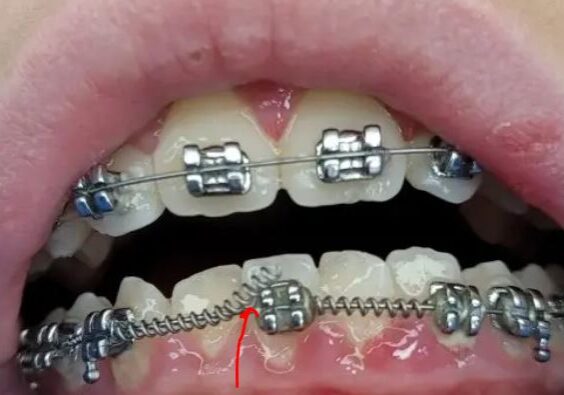Orthodontic Emergencies: Issues and Solutions

Many Orthodontic Emergencies Can be Handled at Home
Fortunately, true orthodontic emergencies are very rare. What is a 'true emergency'?
- An injury or trauma to the mouth, teeth, or face
- Severe pain
- Facial swelling (from dental infection or other source)
- Facial trauma (trauma to the head, mouth, teeth, loss of consciousness)
In any of these instances, especially if after hours, your best option is likely to visit an Emergency Room or Urgent Care Facility. Then contact your orthodontist as soon possible so they can get you in for an evaluation.
Orthodontic Mishaps
Many times, discomfort during treatment may be caused by loose appliances, a broken bracket or attachment, pokey wire or aligners. Thankfully, these can usually be comfortably managed at home until you are able to come into our office. Check out the instructions, photos, and videos below to learn about these commonly encountered orthodontic mishaps.
At Home Troubleshooting Guide
The following guide will help you take care of the most common orthodontic issues with tools you may already have in your own home. This way, you don't have to drop everything and head over to the office for something you can take care of at home.
If the instructions, photos, and videos have not answered your question, our patients are encouraged to take photos of the area and email/text them to our office for additional guidance.
Braces Troubleshooting At Home
Start here. A brief video showing how to use wax around pokey wires/bracket hooks, redirect wire ends, and how to stabilize broken brackets.

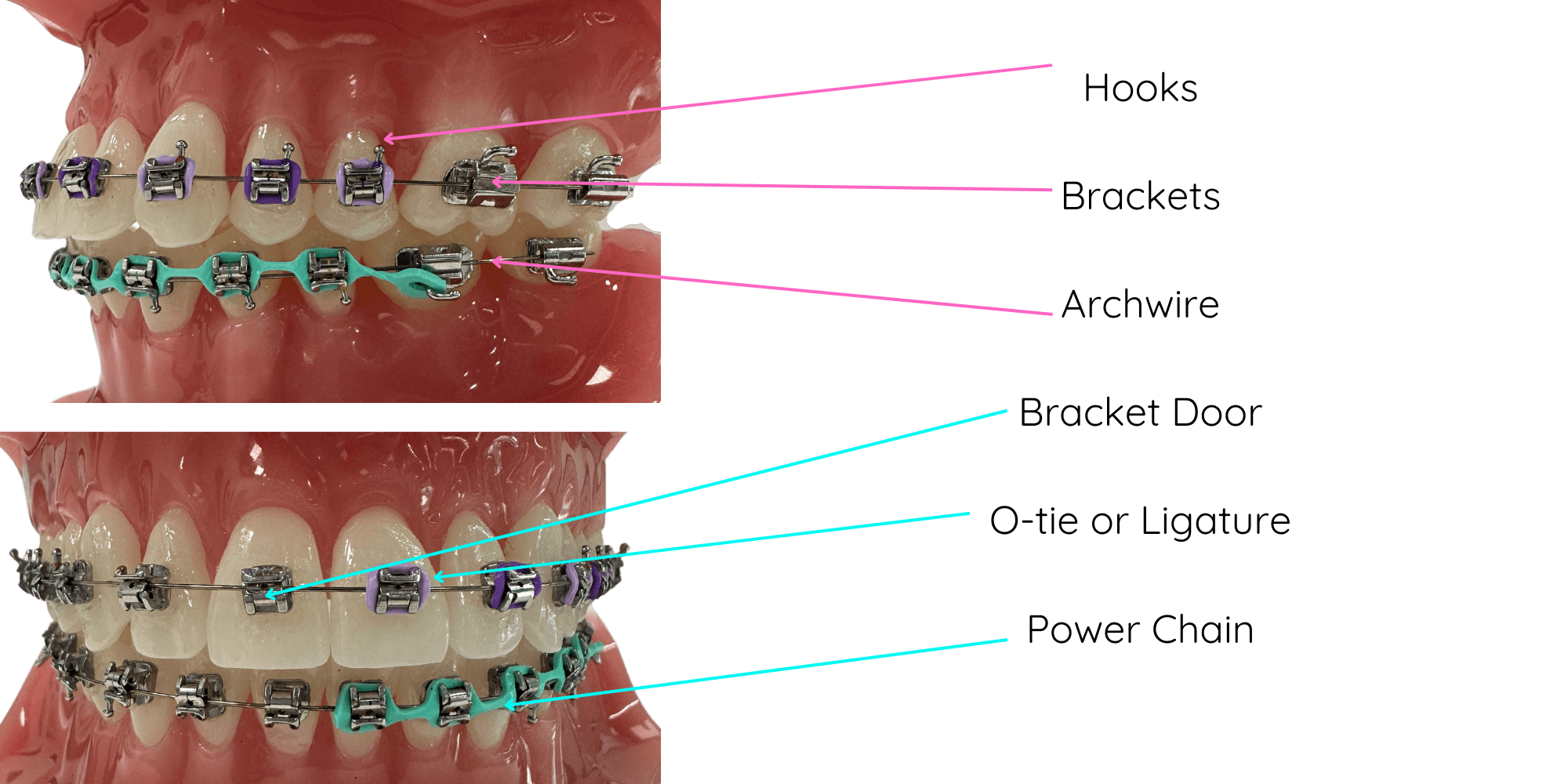
Tools & Supplies
- Orthodontic Relief Wax
- Clean Tweezers
- Small, Sharp Clipper (Nail Clipper)
- Q-Tips
- Salt
- Interproximal Brush
- OTC pain reliever: ibuprofen or acetaminophen
- Topical Anesthetic (Orobase or Ora-Gel)
Irritation of Lips and Cheeks
Sometimes braces, hooks on braces, and wires can be irritating to the mouth, especially when eating. A small amount of orthodontic relief wax makes an excellent buffer between metal and mouth. Simply pinch off a small piece and roll it into a ball the size of a small pea. Flatten the ball and place it completely over the area of the braces causing irritation. Wax can be purchased at any drug store if you are unable to get some from your orthodontist during this time. If you are having irritation from an edge of aligner a emery board/ nail file can be used to gentle smooth out the area.
The video shows how to apply wax to pokey/rough surface. Wax works great right after braces are first placed or if there is a pokey wire. The wax can provide a more comfortable surface for the cheeks and lips while they develop a more fibrous layer (toughen like a callous) and get used to the brackets or appliance.
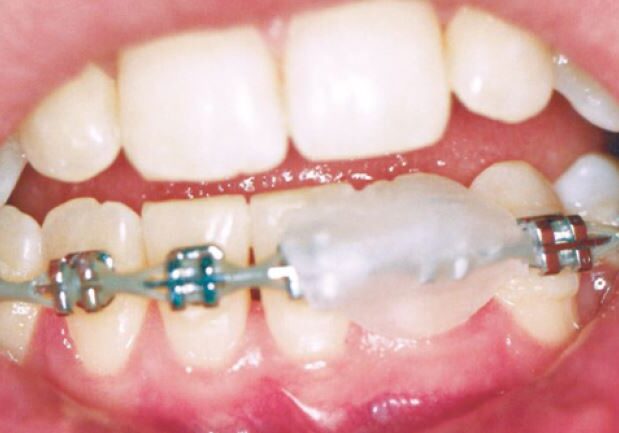
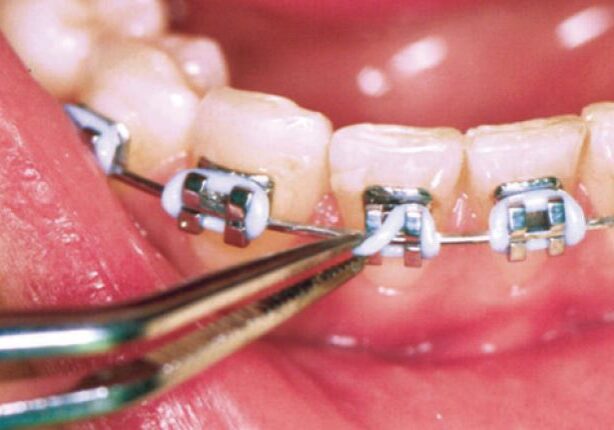
Lost O-ring
An o-ring is the tiny rubber band or sometimes a very thin wire (ligature), that holds the orthodontic wire in the bracket/brace. If rubber ligature should come off, you may be able to put it back in place using disinfected tweezers. If a wire ligature comes loose, simply remove it with the tweezers. If the wire ligature is sticking out into the lip but is not loose, it may be bent back down with a Q-tip or pencil eraser to eliminate the irritation. Should this happen, be sure to notify your orthodontist and come up with a plan for repair. Note: selfligating brackets may have option o-rings or power chain.
Discomfort
During orthodontic treatment, it is normal to have some slight discomfort as you become accustom to the appliances. Patients may experience some soreness in their teeth or lips/cheeks for 1-2 weeks after the start of treatment or at times, after an adjustment. Fortunately, this discomfort can generally be managed with rinsing your mouth with warm salt water, taking over-the-counter pain relievers, such as acetaminophen or ibuprofen, soft diet and/or placement of wax. Some patients may experience some 'looseness' of the teeth- with healthy teeth and gums- this is completely normal with orthodontic tooth movement. The teeth will usually tighten back up during the retention phase of your orthodontic treatment.

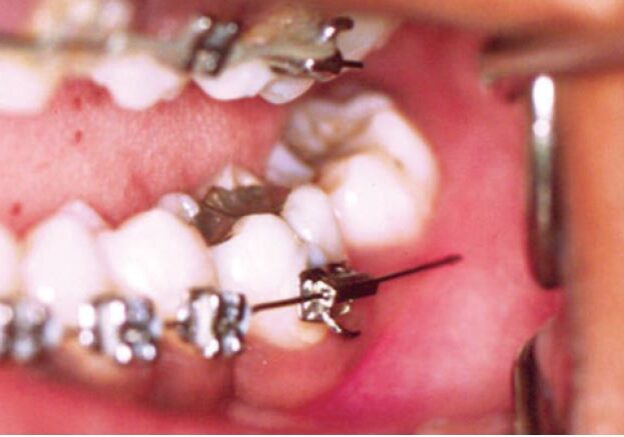

Protruding "Pokey" Wire
Occasionally, the end of a wire will work itself out of place and can irritate the mouth. Use a Q-tip or clean tweezers and try to push the wire so that it is flat against the tooth. If the wire cannot be moved into a comfortable position, cover it with relief wax. Should changes with your wires occur during this time be sure to contact your orthodontist to make them aware of the issue.
In a situation where the wire is extremely bothersome and the patient will not be able to see the orthodontist anytime soon, you may, as a last resort, clip the wire. Reduce the possibility of the patient swallowing the snipped piece of wire by using folded tissue or gauze around the area. Use a pair of sharp clippers and snip off the protruding wire. Relief wax may still be necessary to provide comfort to the irritated area.
See wax use video above in the first section.
Loose/Detached "Broken" Brackets, Wires or Bands
If the braces have come loose in any way, the parent/guardian needs to be notified, and they should call the orthodontist to determine appropriate next steps.
Brackets are the parts of braces attached to teeth with a special adhesive. They are generally positioned in the center of each tooth. The bracket can be knocked off if the patient has eaten one of those hard or crunchy foods orthodontic patients are instructed to avoid, or if the mouth is struck while at play. (Encourage all patients, especially those with braces, to wear a protective mouth guard while playing sports.) If the bracket is off center, the adhesive may have failed. Call the parent/guardian, and recommend that they immediately notify the orthodontist, who will determine the course of action.
If the loose bracket has rotated on the wire and is sticking out and the patient cannot immediately be taken to the orthodontist, you can do a temporary fix to alleviate discomfort and prevent further damage. But take care to prevent swallowing or other injury. To put the bracket back in place, use sterile tweezers to slide the bracket along the wire until it is between two teeth. Rotate the bracket back to the proper position, then slide it back to the center of the tooth.
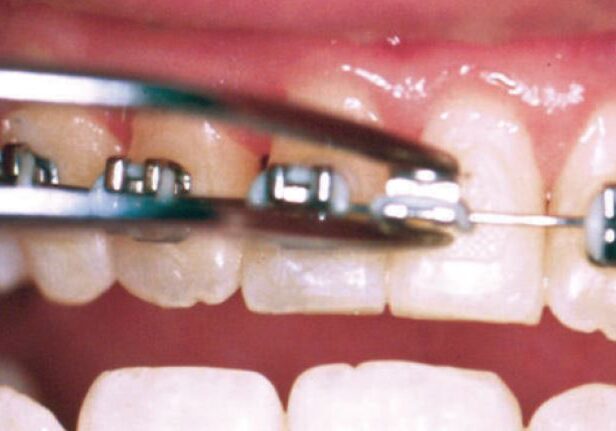
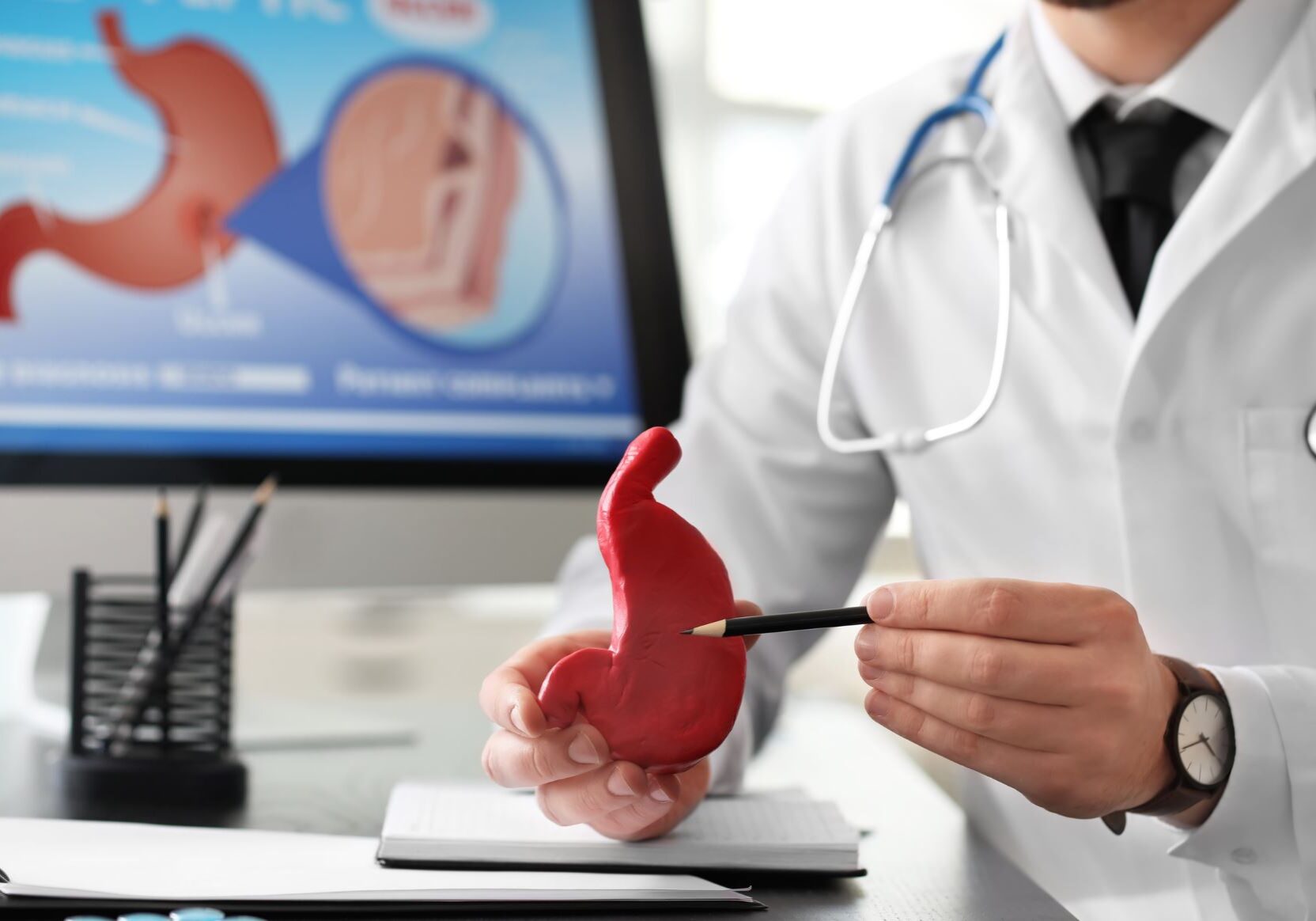
Piece of Appliance is Swallowed
This is rare, but when it does happen, it can be quite alarming for the patient and/or parent. Remain calm. Most of the time, the appliance or bracket has simply been swallowed.
If the patient is coughing excessively or having difficulty breathing, the piece may have been aspirated. If you can see the piece, you may carefully attempt to remove it—but do not try if it could cause harm. If respiratory symptoms are present and the loose piece cannot be coughed up, the patient may need to go to the emergency room, where a scope can be used to remove it. This is very rare.
If no respiratory symptoms have occurred or are present, it is most likely that the bracket was swallowed. This is much more common than aspiration and is generally not a concern. The bracket will pass through the digestive system unchanged, similar to the shell of a piece of corn.
If you believe the bracket has been aspirated and the patient is experiencing respiratory symptoms, go to the emergency room and notify the orthodontist immediately.
Mouth Sores - Aphthous Ulcers
Some patients are susceptible to episodes of mouth sores. While braces do not cause them, they may be precipitated or exacerbated by an irritation from braces. One or several areas of ulceration of the cheeks, lips or tongue may appear. This is not an emergency, but may be very uncomfortable for the patient. Prompt relief may be achieved by applying a small amount of topical anesthetic (such as Orabase or Ora-Gel) directly to the ulcerated surface using a cotton swab. Instruct the patient to reapply as needed.
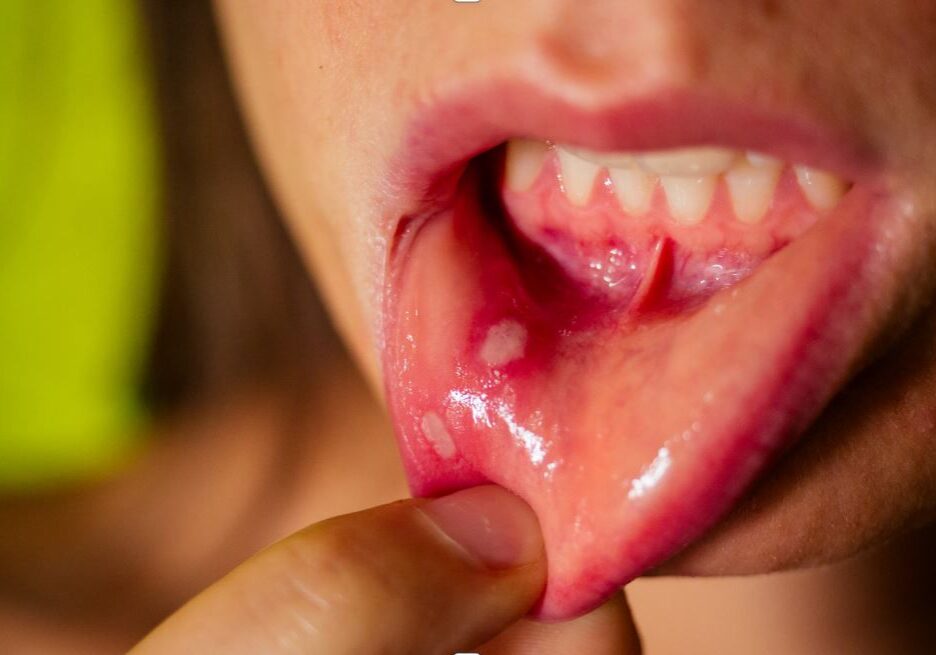
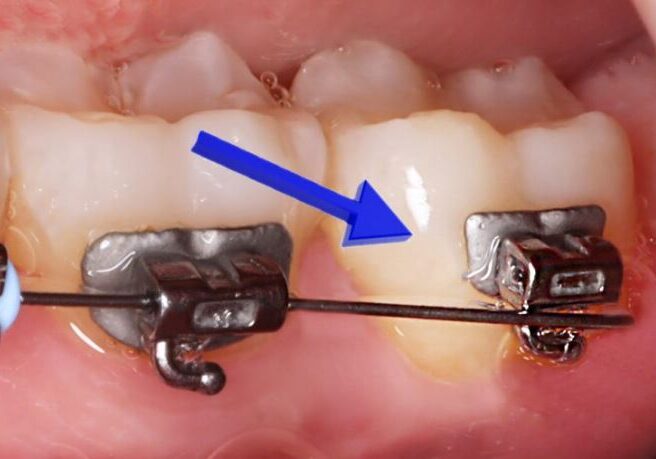
Braces Wire slipped Out Completely
Sometimes, the wire may have slipped out completely from the bracket. If this happens, try and fit it back into the tube of the bracket with your fingers or with clean tweezers. If you can’t fit it back in, you can also clip it back with clean nail clippers and remove the loose piece (the wire is still fixed in place by the other brackets and so treatment won’t be affected).
Open Coil Spring
Coil spring can come partially or completely off due to variety of reasons. Some are trauma, eating improper foods, and just untwisted from the wire overtime with normal chewing. You an attempt to twist the spring back on the wire or place wax over the area until you can come into the office to have it fixed. We always recommend chewing food away from the areas where there is open coil spring, if possible.
